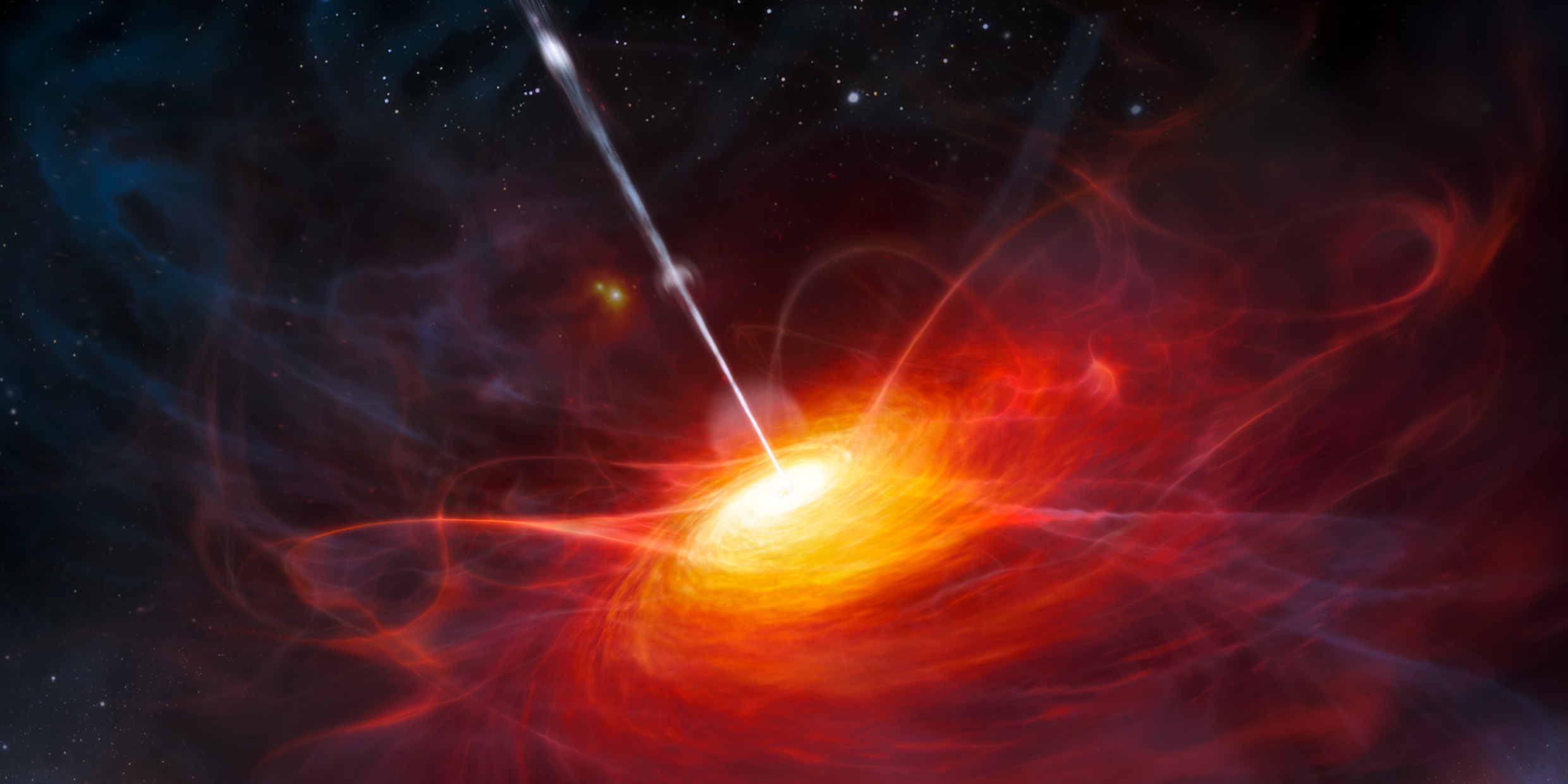Originally published 21 November 1983
In the beginning there was light. That is the conclusion of physicists who have attempted to reconstruct theoretically the first moments of the Universe.
According to current theories, the Universe began about 15 billion years ago in a “Big Bang” explosion from an infinitely dense, infinitely hot seed of energy. The seed was not “somewhere,” it was everywhere. Space itself was created as the Universe began to expand.
In the first moments of Creation, subatomic particles flickered in and out of existence against a background of radiation. The Universe was a seething fireball of matter and energy.
One second after the Beginning, the temperature of the Universe had dropped to 10 billion degrees an the creation of matter ceased. Protons, electrons and neutrons danced on a sea of light. The first atomic nuclei came 10 seconds later. Still the Universe was filled with blinding radiation.
When a million years had passed, the Universe had cooled to the point where charged particles could hold together against the pressure of radiant energy. Electrons linked with nuclei to form atoms. The stuff of the Universe, mostly in the form of hydrogen and helium, was born.
The reign of light subsided. The Universe became transparent. But there was still to be another chapter to the ancient brilliance.
Sometime within the next billion years the galaxies became to form — and not long after, the quasars.
A long time ago and far, far away
Nature provides us with a way to see back to those early days of the Universe. Light travels with a finite velocity. It takes time for light from distant sources to reach the Earth. When astronomers look at distant objects through their telescopes, they are looking backward into time.
The quasars are the most distant objects yet observed.
Quasars were discovered in 1963 by Maarten Schmidt of the California Institute of Technology. Schmidt caught on photographic plates the light spectra of starlike objects that had attracted the attention of astronomers by their copious emission of radio energy. At first the spectra were unfamiliar, unlike those of any other star. Then Schmidt recognized familiar features of the spectrum of hydrogen, except that the entire pattern was shifted drastically toward the red end of the spectrum. The shift signified to Schmidt that the objects were very distant, as distant as anything previously observed.
What led Schmidt to this conclusion? The Universe expands. The continuing outrush of the Big Bang carries every galaxy away from every other. This mutual recession stretches out the wavelengths of the light of the galaxies, shifts the spectrum toward the red. The effect is analogous to the drop in pitch of the sound you hear as a truck roars past you on the highway. As the truck approaches, the sound waves are compressed and the pitch is higher. As the truck recedes, the sound waves are stretched out and the pitch is lowered. In the same way, the wavelengths of light from approaching light sources is shortened, or shifted toward the blue end of the spectrum. The light from receding sources is stretched, or red-shifted.
An intergalactic yardstick
In a uniformly expanding Universe, the degree of red-shift is directly proportional to the distance of the observer from the light source. Astronomers use the red-shift of galaxies to measure their distance. The red-shifts of the starlike objects considered by Schmidt corresponded to distances as great as the furthest visible galaxies. The objects were apparently billions of light years away. Their light had been traveling toward us since early in the history of the Universe.
But the quasars shine far more brightly than the distant galaxies. What could these objects be, beckoning across the eons, tantalizing us with a mysterious glimpse of an earlier era? From their flickering radiation astronomers could deduce that the quasars are relatively nearby, in which case there is no need to believe they are so luminous. But if quasars are nearby, and do not share in the recession of the galaxies, then what causes the reddening of their light?
No one yet knows the true nature of these strange objects. There is a growing consensus that quasars are the bright nuclei of distant galaxies. Perhaps they are chains of supernova detonations in the star-rich central regions of galaxies. More likely, they signal the infall of matter into central black holes, bottomless gravitational pits at the cores of galaxies. Plunging to oblivion, the in-falling matter shed the enormous energies that power the quasars.
An early stage
Richard Green of the Kitt Peak Observatory and Maarten Schmidt have recently announced the completion of a decade-long survey of bright quasars with the 200-inch Hale Telescope on Palomar Mountain. The survey covered one-fourth of the sky. The survey showed that the number of bright quasars increases with distance, and therefore that these mysterious objects were far more common in the early universe. The formation of massive black holes at the centers of galaxies may be a typical early stage in galactic evolution. If so, these spasms of cosmic violence have now mostly subsided, and galaxies — our own Milky Way included — have settled down to a quieter existence.
Not only were there more quasars in the early universe, but the quasars were more luminous. We can envy the brilliance of those early skies. The galaxies were closer then than now, and burned with the light of hot blue stars. At the centers of those great wheels of stars, streams of matter plunged into black holes, pulled by gravity into knots of incredible density and permanent blackness. As the matter fell, it gave up energy that caused the galactic nuclei to glow with a light that outshone the sum of all the stars in the heavens. The Universe blazed with those luminous beacons. It was a time of light.



